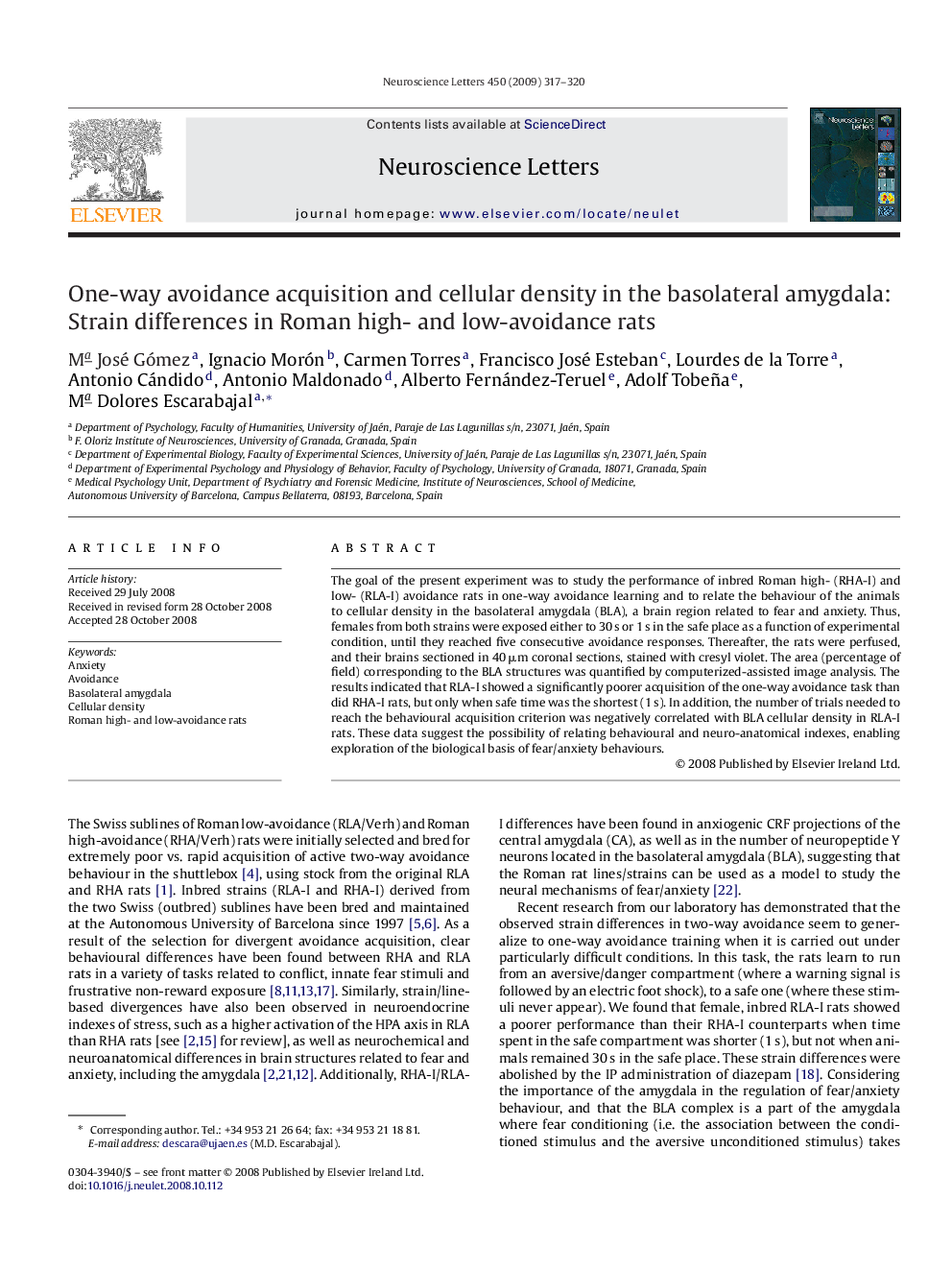| Article ID | Journal | Published Year | Pages | File Type |
|---|---|---|---|---|
| 4347893 | Neuroscience Letters | 2009 | 4 Pages |
Abstract
The goal of the present experiment was to study the performance of inbred Roman high- (RHA-I) and low- (RLA-I) avoidance rats in one-way avoidance learning and to relate the behaviour of the animals to cellular density in the basolateral amygdala (BLA), a brain region related to fear and anxiety. Thus, females from both strains were exposed either to 30 s or 1 s in the safe place as a function of experimental condition, until they reached five consecutive avoidance responses. Thereafter, the rats were perfused, and their brains sectioned in 40 μm coronal sections, stained with cresyl violet. The area (percentage of field) corresponding to the BLA structures was quantified by computerized-assisted image analysis. The results indicated that RLA-I showed a significantly poorer acquisition of the one-way avoidance task than did RHA-I rats, but only when safe time was the shortest (1 s). In addition, the number of trials needed to reach the behavioural acquisition criterion was negatively correlated with BLA cellular density in RLA-I rats. These data suggest the possibility of relating behavioural and neuro-anatomical indexes, enabling exploration of the biological basis of fear/anxiety behaviours.
Related Topics
Life Sciences
Neuroscience
Neuroscience (General)
Authors
Mª José Gómez, Ignacio Morón, Carmen Torres, Francisco José Esteban, Lourdes de la Torre, Antonio Cándido, Antonio Maldonado, Alberto Fernández-Teruel, Adolf Tobeña, Mª Dolores Escarabajal,
